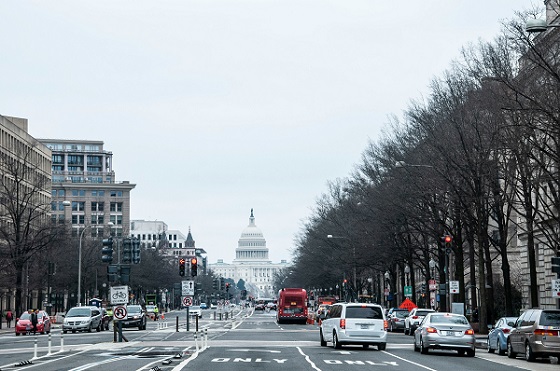Business
Trump Admin reports 75K federal workers have accepted buyout offer

Quick Hit:
The Trump administration confirmed that 75,000 federal employees have accepted its Deferred Resignation Program, a buyout offer allowing them to retain benefits and receive pay through September.
Key Details:
- The Trump administration announced that approximately 75,000 federal employees have accepted its buyout offer.
- The Office of Personnel Management (OPM) confirmed the number, which accounts for less than 5% of the federal workforce of 2.3 million.
- The program, which provides extended benefits and pay through September, excluded military personnel, national security, immigration, and postal workers.
Diving Deeper:
The White House confirmed Wednesday night that around 75,000 federal employees opted into the Trump administration’s Deferred Resignation Program, a buyout initiative designed to reduce government workforce numbers while providing extended benefits for those who voluntarily resign.
The program, administered by the Office of Personnel Management (OPM), originally set a February 6 deadline but was temporarily paused due to legal challenges from federal employee unions. However, a federal judge ruled on Wednesday that the unions lacked the legal standing to block the initiative, allowing the buyout deadline to proceed.
“As of 7:00 PM tonight, the program is now closed,” OPM spokesperson McLaurine Pinover said in a statement. “There is no longer any doubt: the Deferred Resignation Program was both legal and a valuable option for federal employees. This program was carefully designed, thoroughly vetted, and provides generous benefits so federal workers can plan for their futures.”
While the 75,000 participants represent less than 5% of the federal workforce, the move aligns with the Trump administration’s broader efforts to streamline government operations and reduce bureaucratic redundancy. The program was not open to military personnel, national security workers, immigration officers, or postal employees.
Despite initial resistance from federal employee unions, the White House and OPM argue that the program provides financial security and flexibility for those choosing to leave their positions. With the legal battle now settled, the administration considers the initiative a success in its push for a leaner and more efficient federal government.
Business
Chinese firm unveils palm-based biometric ID payments, sparking fresh privacy concerns

By Ken Macon
Alipay’s biometric PL1 scanner uses vein and palm-print data for processing payments, raising security concerns over the storage and use of permanent biometric data.
Alipay, the financial arm of Alibaba, has introduced a new palm-based biometric terminal, dubbed the PL1, which enables individuals to make purchases simply by presenting their hand – no phone, card, or PIN required. Positioned as a faster, touch-free alternative for payment, this system reflects a growing industry shift toward frictionless biometric transactions.
At the core of the PL1 is a dual-mode recognition system that combines surface palm print detection with internal vein mapping. This multi-layered authentication relies on deeply unique biological signatures that are significantly harder to replicate than more common methods like fingerprints or facial scans. Alipay reports that the device maintains a false acceptance rate of less than one in a million, suggesting a substantial improvement in resisting identity spoofing.
Enrollment is designed to be quick: users hover their palm over the sensor and link their account through a QR code. Once registered, purchases are completed in around two seconds without physical interaction. During early trials in Hangzhou, this system reportedly accelerated checkout lines and contributed to more hygienic point-of-sale environments.
The PL1 arrives at a time of rapid expansion in the biometric payments sector. Forecasts estimate that more than 3 billion people will use biometrics for transactions by 2026, with total payments surpassing $5 trillion. Major players are already onboard: Amazon has integrated palm authentication across U.S. retail and healthcare facilities, while JP Morgan is gearing up for a national deployment in the same year.

Alipay envisions the PL1’s use extending well beyond checkout counters. It is exploring applications in public transit, controlled access facilities, and healthcare check-ins, reflecting a broader trend toward embedding biometric systems in daily infrastructure. However, while domestic deployment benefits from favorable policy conditions, international expansion may be constrained by differing legal standards, particularly in jurisdictions that enforce stringent rules on biometric data usage and consent.
Despite the technological advancements and convenience the PL1 offers, privacy remains a major point of contention. Unlike passwords or cards that can be reset or replaced, biometric data is immutable. If compromised, individuals cannot simply “change” their palm patterns or vein structures. This permanence heightens the stakes of any potential data breach and raises long-term concerns about identity theft and surveillance.
Alipay’s approach, storing encrypted biometric templates locally on devices and restricting data flow within national border, does address certain regulatory demands, especially within China, but the broader implications of biometrics are likely to be a growing privacy and surveillance concern in the coming years.
Business
Trump considers $5K bonus for moms to increase birthrate

 MxM News
MxM News
Quick Hit:
President Trump voiced support Tuesday for a $5,000 cash bonus for new mothers, as his administration weighs policies to counter the country’s declining birthrate. The idea is part of a broader push to promote family growth and revive the American family structure.
Key Details:
- Trump said a reported “baby bonus” plan “sounds like a good idea to me” during an Oval Office interview.
- Proposals under consideration include a $5,000 birth bonus, prioritizing Fulbright scholarships for parents, and fertility education programs.
- U.S. birthrates hit a 44-year low in 2023, with fewer than 3.6 million babies born.
Diving Deeper:
President Donald Trump signaled his support Tuesday for offering financial incentives to new mothers, including a potential $5,000 cash bonus for each child born, as part of an effort to reverse America’s falling birthrate. “Sounds like a good idea to me,” Trump told The New York Post in response to reports his administration is exploring such measures.
The discussions highlight growing concern among Trump administration officials and allies about the long-term implications of declining fertility and family formation in the United States. According to the report, administration aides have been consulting with pro-family advocates and policy experts to brainstorm solutions aimed at encouraging larger families.
Among the proposals: a $5,000 direct payment to new mothers, allocating 30% of all Fulbright scholarships to married applicants or those with children, and launching federally supported fertility education programs for women. One such program would educate women on their ovulation cycles to help them better understand their reproductive health and increase their chances of conceiving.
The concern stems from sharp demographic shifts. The number of babies born in the U.S. fell to just under 3.6 million in 2023—down 76,000 from 2022 and the lowest figure since 1979. The average American family now has fewer than two children, a dramatic drop from the once-common “2.5 children” norm.
Though the birthrate briefly rose from 2021 to 2022, that bump appears to have been temporary. Additionally, the age of motherhood is trending older, with fewer teens and young women having children, while more women in their 30s and 40s are giving birth.
White House Press Secretary Karoline Leavitt underscored the administration’s commitment to families, saying, “The President wants America to be a country where all children can safely grow up and achieve the American dream.” Leavitt, herself a mother, added, “I am proud to work for a president who is taking significant action to leave a better country for the next generation.”
-

 2025 Federal Election2 days ago
2025 Federal Election2 days agoBREAKING: THE FEDERAL BRIEF THAT SHOULD SINK CARNEY
-

 2025 Federal Election2 days ago
2025 Federal Election2 days agoCHINESE ELECTION THREAT WARNING: Conservative Candidate Joe Tay Paused Public Campaign
-

 2025 Federal Election1 day ago
2025 Federal Election1 day agoMark Carney Wants You to Forget He Clearly Opposes the Development and Export of Canada’s Natural Resources
-

 International19 hours ago
International19 hours agoPope Francis’ body on display at the Vatican until Friday
-

 Business1 day ago
Business1 day agoHudson’s Bay Bid Raises Red Flags Over Foreign Influence
-

 2025 Federal Election1 day ago
2025 Federal Election1 day agoCanada’s pipeline builders ready to get to work
-

 John Stossel2 days ago
John Stossel2 days agoClimate Change Myths Part 2: Wildfires, Drought, Rising Sea Level, and Coral Reefs
-

 International2 days ago
International2 days agoPope Francis’ funeral to take place Saturday


